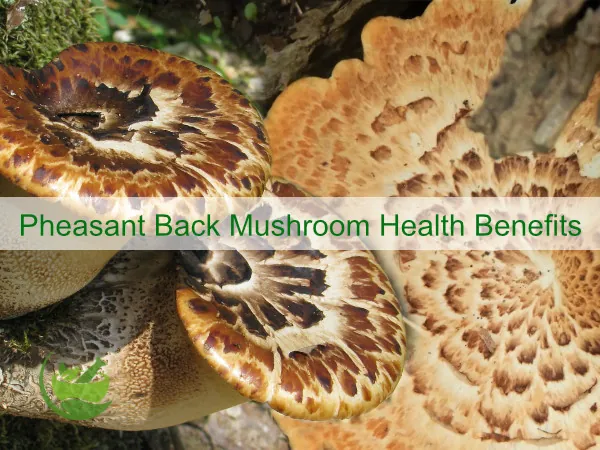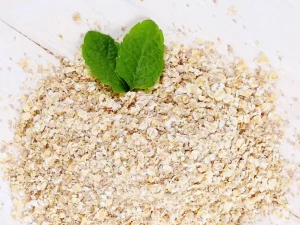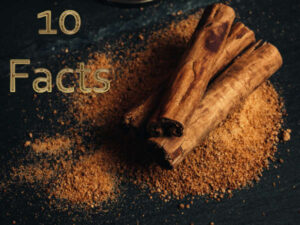Pheasant Back Mushroom Health Benefits
Let’s explore Pheasant Back Mushroom health benefits and other related characteristics like habitats, geographical distribution, morphological features, etc.
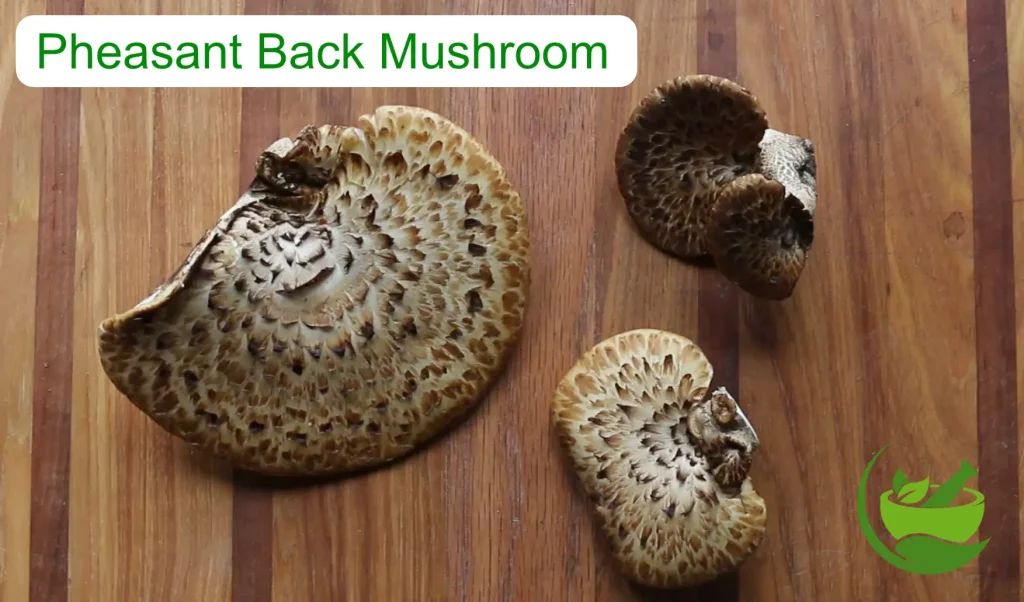
Pheasant Back Mushrooms, scientifically known as Polyporus squamosus, is a type of wild mushroom found in North America, Europe, and Asia. These mushrooms are unique not only in their appearance but also in the potential health benefits they offer. In this article, we will explore the various health benefits of Pheasant Back Mushrooms and their culinary uses.
Common Names of Pheasant Back Mushroom
The Pheasant Back mushroom is known by several common names, including:
- Dryad’s Saddle: This name is derived from the mushroom’s shape and resemblance to a horse’s saddle.
- Hawk’s Wing: The fan-shaped appearance of the mushroom’s cap is reminiscent of a hawk’s wing.
- Scaly Polypore refers to the scaly or squamous texture of the mushroom’s cap.
- Phoenix Mushroom: Some people call it the Phoenix Mushroom due to its resemblance to the plumage of a phoenix.
- Polyporus of the Elm: This name connects it to its common habitat, often on dead or dying elm trees.
Nutritional Profile of Pheasant Back Mushrooms
Pheasant Back Mushrooms are known for their distinctive appearance, overlapping scales resembling the plumage of a pheasant’s back. While less commonly consumed than other mushroom varieties like Shiitake or Portobello, Pheasant Back Mushrooms have a notable nutritional profile. They are a good source of:
Vitamins: Pheasant Back Mushrooms contain essential vitamins, including B vitamins (niacin, riboflavin, and pantothenic acid) and vitamin D, crucial for bone health and immune function.
Minerals: These mushrooms provide important minerals like potassium, phosphorus, and selenium, which play roles in maintaining proper bodily functions.
Dietary Fiber: Pheasant Back Mushrooms are rich in dietary fiber, aiding in digestive health and providing a feeling of fullness.
Antioxidants: They contain various antioxidants, such as beta-glucans, phenolic, and ergosterol, which can help combat oxidative stress and inflammation in the body.
Polysaccharides: Pheasant back mushrooms contain polysaccharides, complex carbohydrates known for their immune-boosting properties. These compounds may have potential health benefits, including anti-inflammatory and antioxidant effects.
Amino Acids: Like many other mushrooms, pheasant back mushrooms contain various essential and non-essential amino acids.
Amino acids are the fundamental components of proteins and play crucial roles in numerous biological functions within the human body.
Modern Medical Research on Mushrooms
Various potential health benefits of mushrooms and their beneficial results have greatly impacted scientists’ attention toward research on different health benefits. Analysis has depicted encouraging results for further human-based research and clinical experiments. A few examples of study are given here:
Mushrooms and Beta-Glucans
Review/Research on “Edible Mushrooms and Beta-Glucans: Impact on Human Health” was carried out, which suggested that “The growing knowledge on the mechanism(s) and health benefits of mushrooms is encouraging the development of a potential clinical use of β-glucans, and also to further document their role in preserving health and prevent disease in the context of healthy lifestyles.”
Mushrooms and cancers
A review on “Mushroom extracts and compounds with suppressive action on breast cancer: evidence from studies using cultured cancer cells, tumor-bearing animals, and clinical trials” was conducted, which suggests that “Antineoplastic effectiveness in human clinical trials and mechanism of anticancer action have been reported for Antrodia camphorata, Cordyceps sinensis, Coriolus versicolor, Ganoderma lucidum, Grifola frondosa, and Lentinula edodes” the various mushrooms.
Mushrooms and Health Benefits
Review/Research on “A Critical Review on Health Promoting Benefits of Edible Mushrooms through Gut Microbiota” was conducted, which depicted that “Mushrooms act as prebiotics to stimulate the growth of gut microbiota, conferring health benefits to the host. In the present review, we have summarized the beneficial activities of various mushrooms on gut microbiota via the inhibition of exogenous pathogens, thus improving the host health.
Mushrooms and Inflammation
Research on bioactive compounds like antioxidant and anti-inflammatory
etc. found in mushrooms, has suggested positive results, which is evident from the following reference:
“Mushrooms are rich in anti-inflammatory components, such as polysaccharides, phenolic and indolic compounds, mycosteroids, fatty acids, carotenoids, vitamins, and biometals. Metabolites from mushrooms of the Basidiomycota taxon possess antioxidant, anticancer, and, most significantly, anti-inflammatory properties.
Recent reports indicate that edible mushroom extracts exhibit favorable therapeutic and health-promoting benefits, particularly for inflammation-related diseases. In its all certainty, edible mushrooms can be referred to as a “superfood” and are recommended as a valuable constituent of the daily diet.”
Health Benefits of Pheasant Back Mushrooms
The beta-glucans found in Pheasant Back Mushrooms are known for their immunomodulatory effects. They can help strengthen the immune system and enhance the body’s defense against infections and illnesses.
The antioxidants present in Pheasant Back Mushrooms can protect cells from oxidative damage, potentially reducing the risk of chronic diseases and supporting overall health.
Compounds in Pheasant Back Mushrooms have anti-inflammatory properties, making them beneficial for individuals with conditions like arthritis or other inflammatory disorders.
The dietary fiber in these mushrooms supports a healthy digestive system by promoting regular bowel movements and aiding in nutrient absorption.
The fiber content can help promote satiety and reduce overeating, which can be beneficial for weight management and maintaining a healthy weight.
Pheasant Back Mushrooms contain vitamin D, essential for calcium absorption and bone health. Including them in your diet can help maintain strong bones.
Culinary Delight
Pheasant Back Mushrooms have a savory, earthy flavor and slightly crunchy texture, making them a delightful addition to various dishes. Chefs and foragers alike appreciate their versatile nature, as they can be used in multiple recipes, from soups and stews to sautés and risottos.
Their robust flavor pairs well with herbs and spices, making them a versatile ingredient in the kitchen. They can be used in various cuisines.
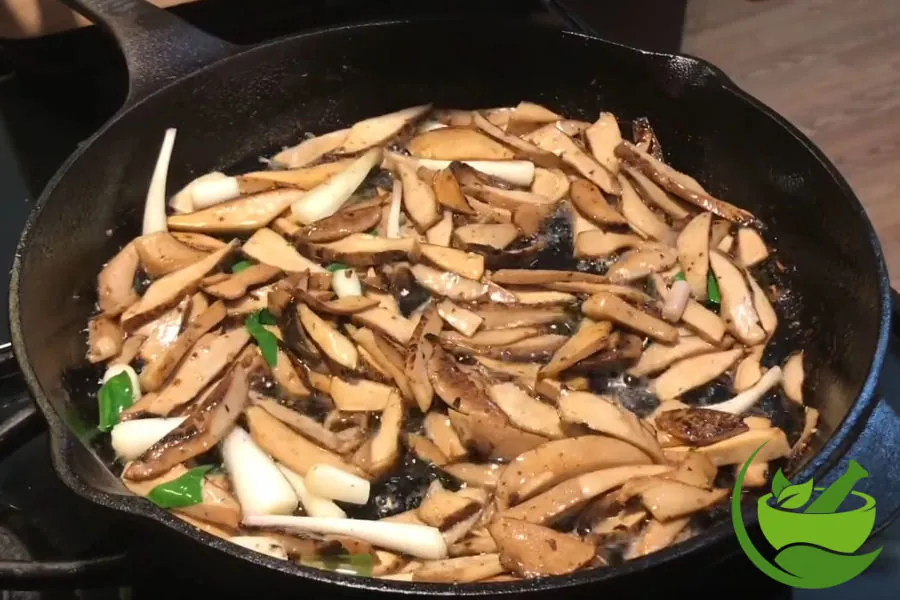
Culinary applications
Let’s explore the culinary applications of Pheasant Back Mushrooms and also how to cook Pheasant Back Mushroom. Whether you’re a cooking novice or an experienced chef, these special mushrooms offer a delightful range of flavors that can enhance your dishes. From simple soups to flavorful stir-fries, discover to transform your meals and bring a unique taste to your table. Some of the culinary applications you may watch here:
- Sautéed:
Sauté Pheasant Back Mushrooms in butter or olive oil with garlic and herbs for a simple, flavorful side dish. - Grilled:
These mushrooms can be grilled to add a smoky flavor to your dishes, making them an excellent addition to kebabs or vegetable medleys. - In Soups and Stews:
Add sliced Pheasant Back Mushrooms to soups and stews to impart a unique umami flavor and enhance the overall depth of the dish. - Pickled:
Some people enjoy pickling Pheasant Back Mushrooms to preserve their unique taste and extend their shelf life. - Powdered:
Drying and grinding the mushrooms into a powder allows you to sprinkle them on various dishes, such as pasta, omelets, or roasted vegetables.
Harvesting, uses, and preservation
Harvesting Precautions
While Pheasant Back Mushrooms offer numerous health benefits and culinary possibilities, it’s essential to exercise caution when foraging for wild mushrooms. Incorrect identification can lead to the ingestion of toxic varieties. If you’re not experienced in wild mushroom foraging, purchasing from a reputable source is the best option.
Identification
It’s crucial to recognize the key features of Pheasant Back mushrooms. They have a distinct ‘poultry-like’ odor and display a unique bracket-shaped growth with a scaly upper surface that resembles a pheasant’s back.
Uses and Preservation
After harvesting pheasant back mushrooms (scientifically known as Cerioporus squamosus or Polyporus squamosus), it’s important to use or preserve them promptly to maintain their quality. One common method is to set a time limit for their use or preservation, which typically ranges from a few days to a couple of weeks, depending on your chosen method. Here’s how you can handle them:
To preserve
Remember that mushroom quality can deteriorate over time, so it’s essential to use a reliable preservation method and stick to the recommended time limits to ensure the best taste and texture.
Geographical Distribution
Mushrooms are a fascinating part of the natural world, with diverse species scattered across the globe. One such intriguing mushroom is the Pheasant Back Mushroom, which is renowned for its unique appearance and wide geographical distribution. Here, we will know the geographical distribution of Pheasant Back Mushrooms.
The Pheasant Back Mushroom is commonly found in North America from late spring to early autumn. In the United States, it is often spotted in the Midwest, Northeast, and parts of the Pacific Northwest. It thrives in forested areas and has been reported in states like Michigan, Ohio, New York, and Washington.
In Europe, the Pheasant Back Mushroom is relatively widespread. It can be located in the United Kingdom, France, Germany, and Poland. Like its North American habitat, this mushroom prefers to grow on hardwood trees, especially oak.
The geographical distribution of Pheasant Back Mushrooms extends to Asia as well. These mushrooms are foraged and enjoyed as a delicacy in countries like Japan and China. The combination of suitable climate conditions and hardwood trees creates an ideal habitat for this species in Asia.
While North America, Europe, and Asia are the primary areas where Pheasant Back Mushrooms are found, they have also been reported in other regions. It is essential to note that the presence of these mushrooms depends on several factors, including climate, tree species, and environmental conditions.
Habitat Diversity
Pheasant Back mushrooms exhibit a remarkable adaptability to various ecological niches, contributing to their widespread distribution. They can be found in deciduous and coniferous forests and urban and suburban areas, making them a versatile and accessible species for foragers and nature enthusiasts.
Deciduous Forests:
Deciduous forests, dominated by hardwood trees like oaks, maples, and beeches, provide an ideal habitat for Pheasant Back mushrooms. These fungi grow on the decaying wood of living or dead trees, often appearing on the stumps, branches, or trunks. Their mycelium, the fungal network responsible for growth, breaks down lignin and cellulose in the wood, aiding in decomposition. Look for Pheasant Back mushrooms in these lush woodlands during the spring and early summer.
Coniferous Forests:
While less common, Pheasant Back mushrooms can also be found in coniferous forests, particularly where conifers are interspersed with hardwoods. They may establish themselves on decaying conifer logs or stumps. The presence of these mushrooms in coniferous habitats underscores their adaptability and resourcefulness in colonizing different tree species.
Urban and Suburban Areas:
One fascinating aspect of Pheasant Back mushrooms is their capacity to grow in human-altered landscapes. They can often be seen emerging from old landscaping timbers, tree stumps, and even backyard gardens. Their resilience to urbanization highlights their ability to exploit anthropogenic habitats.
Growth Conditions
Pheasant Back mushrooms thrive in specific conditions, and understanding these factors can aid in successful foraging:
Temperature and Moisture:
These mushrooms prefer a temperate climate with consistent rainfall. Spring and early summer are the best times to search for them, as they require adequate moisture to fruit.
Host Trees:
As mentioned earlier, Pheasant Back mushrooms are commonly associated with hardwood trees, especially oaks. Still, they can also be found on conifers in mixed forests.
Ecological Significance
Beyond their health benefits and culinary uses, pheasant back mushrooms play a significant role in the ecosystem. They are saprotrophic, meaning they feed on decaying organic matter, such as fallen trees and stumps. In doing so, they aid in decomposing, breaking down wood and other plant materials, and returning essential nutrients to the soil. This ecological role is crucial for maintaining the balance of forest ecosystems.
Pheasant back mushrooms are also a source of food for various wildlife species, including insects and small mammals, contributing to the overall biodiversity of their habitat. Their presence can indicate the health of a forest ecosystem.
Cultural Relevance
Pheasant back mushrooms have cultural significance in various parts of the world, particularly in regions where they are indigenous. They have been foraged and used in traditional cuisines for generations. For example, in some Northern European countries, pheasant back mushrooms are a beloved ingredient in local dishes.
In Native American cultures, certain tribes have incorporated these mushrooms into their diets and traditional practices. They are also known for their use in crafting, where the dried mushroom caps are used for decorative purposes and in conventional medicine.
Mushrooms and Toxicity
Mushrooms are a fascinating kingdom of life, with over 10,000 known species. While the majority of mushrooms are safe to eat and enjoy, there is a subset that can be highly toxic, and in some cases, lethal.
Here are some examples of poisonous mushrooms, their geographical availability, and some key recognition characteristics:
Common Poisonous Species
Amanita phalloides (Death Cap)
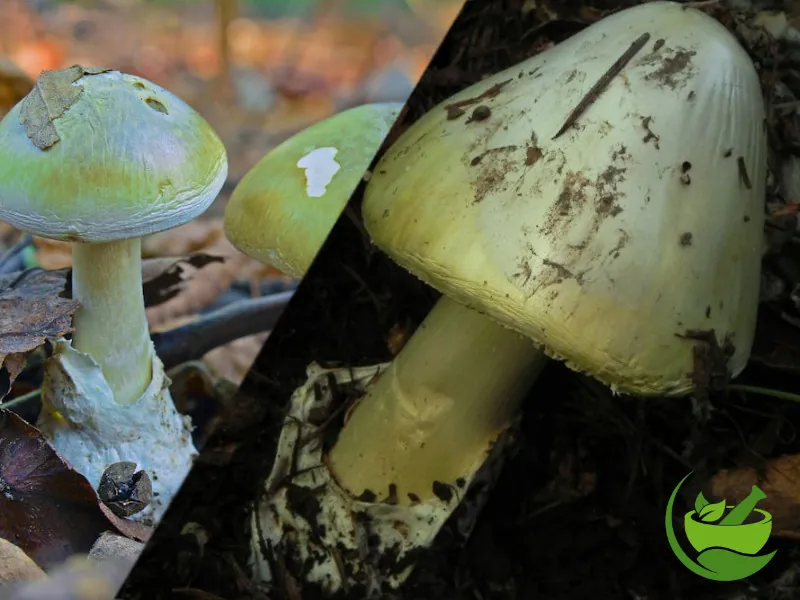
Amanita muscaria (Fly Agaric)
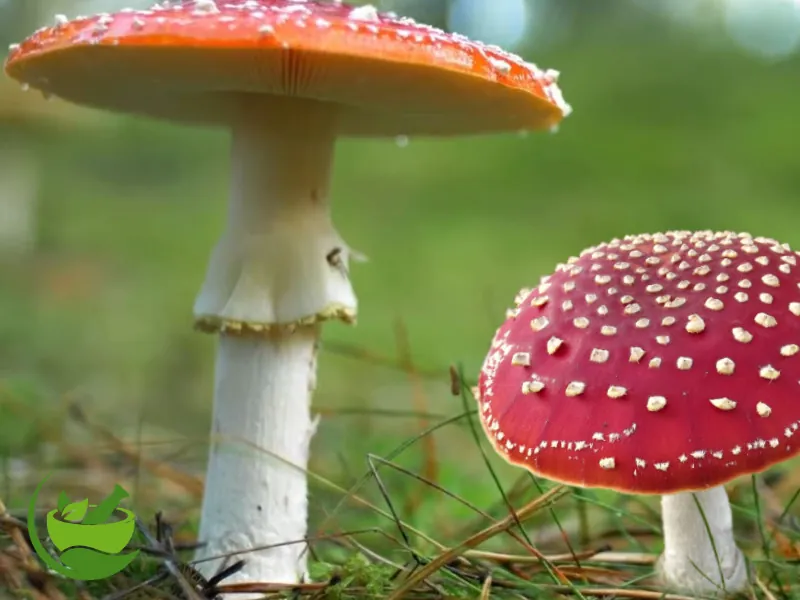
Galerina Marginata
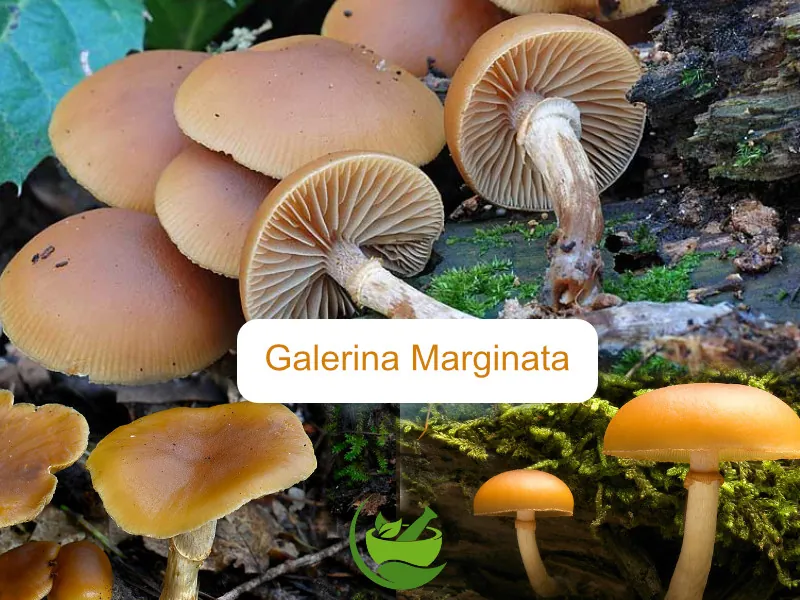
Clitocybe Dealbata
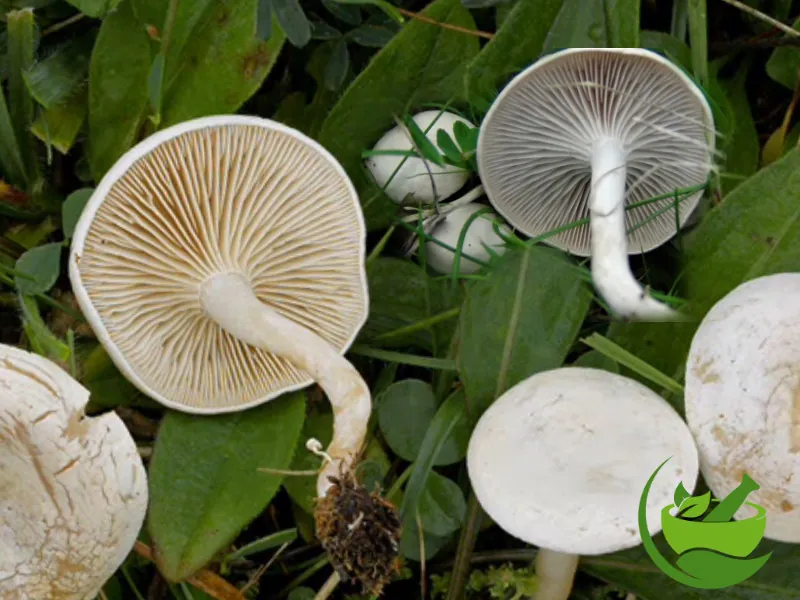
Gyromitra Esculenta (False Morel)

Conocybe Filaris (Cone Cap)
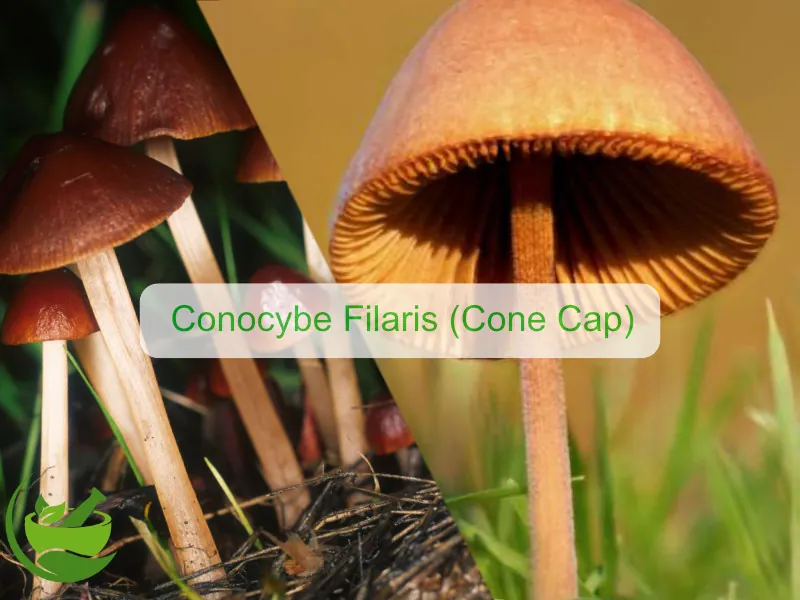
Common Toxic Compounds
Mushrooms contain a range of toxic compounds. The most infamous is mycotoxins. These substances, produced by certain species, can cause severe illness or death if ingested. Amanitin toxins, present in the Amanita genus, are among the most deadly.
Poisonous vs. Edible Mushrooms
Distinguishing between edible and toxic mushrooms is paramount. Key features such as cap shape, gill structure, and color can help differentiate them. However, novice foragers should never rely solely on visual cues and should consult experienced mycologists or field guides.
The Risks of Mushroom Poisoning
Mushroom poisoning can result in a wide range of symptoms, from mild gastrointestinal discomfort to organ failure and death. Prompt medical attention is essential if poisoning is suspected.
Geographic Variability
The distribution of toxic species can vary by region. A mushroom considered safe in one area may be poisonous in another. Thus, it is crucial to consider location when foraging.
Safe Mushroom Foraging
To minimize risks, follow these guidelines:
Mushroom Poisoning Treatment
In the event of ingestion, it is vital to seek immediate medical attention. Treatment may involve supportive care, medication, and sometimes, liver transplant for severe cases of Amanitin poisoning.
Conclusion
In summary, Pheasant Back Mushrooms, or Polyporus squamosus, offer unique health benefits and culinary versatility. They are rich in nutrients, supporting immunity and overall health. Modern research confirms their immune-boosting, antioxidant, and anti-inflammatory properties.
Foraging for these mushrooms requires caution due to the risk of misidentification. They thrive in various environments, including forests and urban areas, contributing to decomposition and biodiversity.
Pheasant Back Mushrooms are culturally significant and distributed across North America, Europe, and Asia. However, safe foraging practices are vital due to the potential toxicity of certain mushrooms. Always exercise caution and seek medical attention if mushroom poisoning is suspected.

